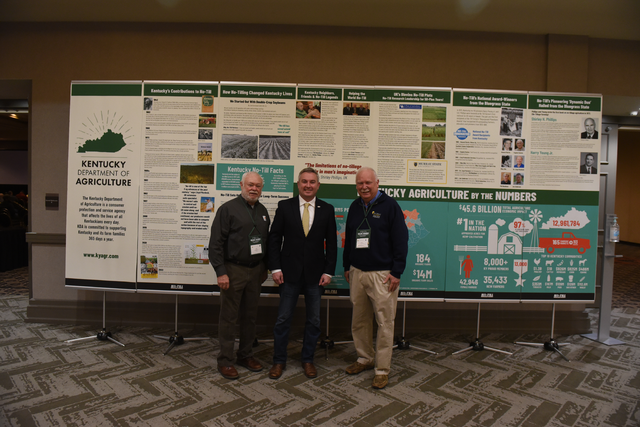No-Till Farmer editors encounter a variety of articles, social media posts, podcasts and videos that offer a unique look at the grower's world from the lofty digital realm. Here is our favorite content from the past week from across the web:
- No-Till vs. Vertical-Till Corn: Which Is Better?
- Dave Brandt, Ray Archuleta Discuss No-Till on Field Work Podcast
- No-Till's Home State Aims to Become Agtech Capital of US
- The Rationale Behind No-Till and Organic
- No-Till Tough
Best of the Web This Week is brought to you by Sound Agriculture.
SOURCE by Sound Agriculture wakes up the soil microbiome so you can access more nitrogen and phosphorus from your field. This bioinspired chemistry fixes atmospheric nitrogen and unlocks phosphorus that is tied up in the soil. It’s like caffeine for microbes, working with the soil you’ve already got to make your season more productive. Learn more at www.sound.ag.
No-Till vs. Vertical-Till Corn: Which Is Better?
This video by YouTuber Irrigated Farmer does a good job of laying out the pros and cons of no-till compared to vertical tillage. Among the takeaways: no-till does a better job retaining moisture, but can pose unique issues relating to downforce because of residue and the amount of downforce required. It's worth a watch just to see the side-by-side comparison.
Dave Brandt, Ray Archuleta Discuss No-Till on Field Work Podcast
A couple No-Till legends showed up on the Field Work podcast this week, which targets younger, new and emerging regenerative farmers. Dave Brandt and Ray Archuleta sat down with Mitchell Hora, the host of the podcast, to talk about no-till and cover crops.
No-Till's Home State Aims to Become Agtech Capital of US
Kentucky is the birthplace of the no-till agriculture movement. But rather than rest on that significant laurel, the state has forged ahead with developing new technological innovations and a welcome home for innovation. The latest development comes in the form of a new agriculture technology development cooperation announced by Kentucky Secretary of Agriculture Ryan Quarles.
The Rationale Behind No-Till and Organic
This video does a great job of explaining, in simple terms, the differences between organic and no-till. YouTuber Sunnysideuppastures shows her no-till corn field interseeded with cover crops for pasture.
No-Till Tough
This tweet by soil consultant Orvin Bontrager shows no-till soybeans that withstood hail damage and early freezes. It's a testament both to no-till and the ability of soybeans to conquer adversity.
No-till. Heavy early freeze damage. Twice hail damaged. <65k resulting stands. Canopied now. Early R5. Soybeans compensate amazingly well. pic.twitter.com/ao1130d8EE
— Orvin Bontrager (@OrvinBontrager) August 8, 2022
Is there something you want to share in "This Week"? Send us an email.
Best of the Web This Week is brought to you by Sound Agriculture.
SOURCE by Sound Agriculture wakes up the soil microbiome so you can access more nitrogen and phosphorus from your field. This bioinspired chemistry fixes atmospheric nitrogen and unlocks phosphorus that is tied up in the soil. It’s like caffeine for microbes, working with the soil you’ve already got to make your season more productive. Learn more at www.sound.ag.













